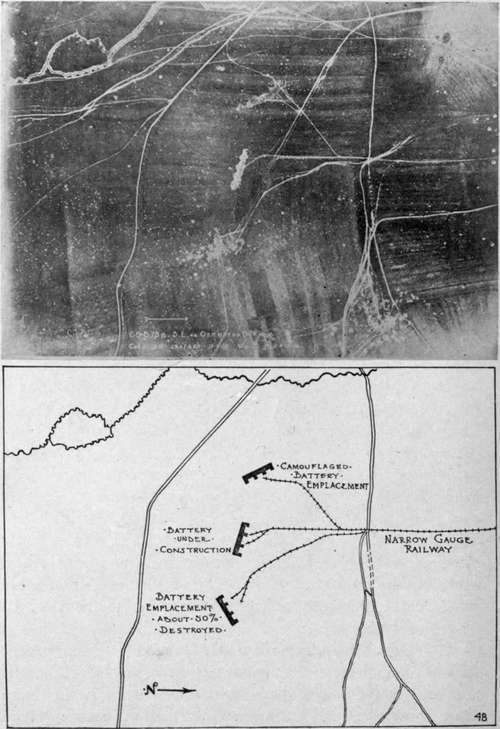Filters For The Photographic Detection Of Camouflage
Description
This section is from the book "Airplane Photography", by Herbert E. Ives. Also available from Amazon: Airplane photography.
Filters For The Photographic Detection Of Camouflage
In the photographic as in the visual detection of camouflage, the problem is to differentiate colors which ordinarily look alike, but which are actually of different color composition. Particularly important are the differences between natural foliage greens and the paints used to simulate them. If these differ in their reflection spectra, a proper choice of filter will show up the two greens as markedly different. Two kinds of difference may be produced ; either the two colors may be changed in relative brightness, or they may be altered in hue. Thus foliage green, due to its possessing a reflection band in the red of the spectrum, which is absent in most pigments, may be made to appear red while the camouflage remains green or turns black. Filters which cause changes of color are of course of no use for photographic detection of camouflage, since the photographic image is colorless. Brightness differences are alone available.
Those same filters which have been worked out primarily for producing brightness differences in visual detection of camouflage could be used photographically, provided the plates employed were color sensitive, and were as well screened to imitate the sensibility of the eye. But the most useful visual filters are those causing color differences to appear; more than this, the visual camouflage detection filters as a class have low light transmissions, so that their usefulness in photography is doubtful. Little work has actually been done with camouflage detection filters for photography. Yet in spite of this photography has been of real service in this form of detective work. Its utility for the purpose comes from the f act that the natural sensitiveness of th e plat e t o blue, violet and invisible ultra-violet acts to extend the range of the spectrum in which differences between identical and merely visually matched colors may be picked up. Consequently the plain unscreened plate has proved a very efficient camouflage detector—so efficient in fact that all camouflage materials have had to be subjected to a photographic test before acceptance. Fig. 171 shows how an ordinary photograph reveals the unnatural character of the camouflage over a battery.

Fig. 171. - Three stages in the life of a battery.
Continue to:
- prev: Effects Secured By The Use Of Filters
- Table of Contents
- next: Methods of Mounting And Using Filters
Tags
camera, lens, airplane, aerial, film, exposure, photography, maps, birdseye
